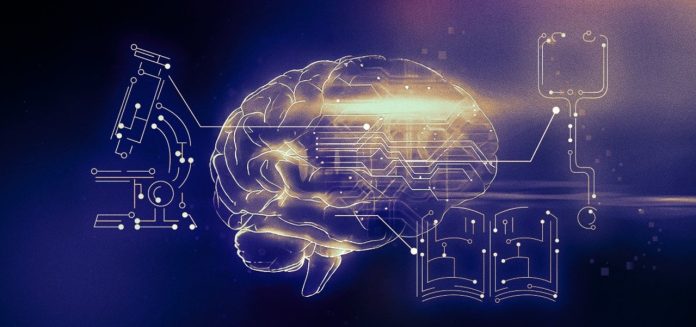Deep learning is a subfield of machine learning that applies multilayered neural networks to simulate brain decision-making. The concept is essentially interchangeably with human learning systems which allow machines to learn from data, thus constituting many AI applications we use today-dotting, speech recognition, image analysis, and natural language processing areas.
Deep Learning History:
Since the 1940s, when Walter Pitts and Warren McCulloch introduced a mathematical model of neural networks inspired by the human brain, the very onset of deep learning can be said to have started. In the 1950s and 60s, with pioneers like Alan Turing and Alexey Ivakhnenko laying the groundwork for neural computation and early network architectures, it proceeded forward. Backpropagation emerged as a concept during the ’80s but became very popular with the availability of large computational prowess and data set in 2000. The dawn of newfound applications truly arose in 2012 when, for instance, AlexNet, a deep convolutional neural network, took image classification to another level by dramatically increasing accuracy. Since then, deep learning has become an ever indomitable force for innovation in computer vision, natural language processing, and autonomous systems.
Types of Deep Learning:
Deep learning can be grouped into various learning approaches, depending on the training of the model and the data being used-
- Supervised deep learning models are trained over labeled datasets, which have all input data paired with the corresponding output data. The model tries to learn to map the input data to the output data so that it can later generalize for unseen data through prediction. Among the popular examples of fulfillment of these tasks are image classification, sentiment analysis, and price or trend prediction.
- Unsupervised deep learning operates over unlabeled data, with the system expected to unearth underlying structures or patterns on its own. It is used in clustering similar data points, reducing the dimensionality of data, or detecting relationships among large-size datasets. Examples are customer segmentation, topic detection, and anomaly detection.
- Semi-supervised deep learning places a small set of labeled data against a large set of unlabeled data, striking a balance between accuracy and efficiency in medicine and fraud detection. Self-supervised deep learning lets models create their own learning labels, opening the two fields of NLP and vision to tasks requiring less manual annotation.
- Reinforcement deep learning is a training methodology for machine-learning models where the agent interacts with an environment, receiving rewards or penalties based on its actions. The aim is to maximize the obtained reward and its performance over time. This learning technique is used to train game-playing AIs such as AlphaGo, autonomous navigation, and robotic manipulation.
Deep learning utilizes the passage of data through an array of artificial neural networks, where each subsequent layer extracts successively more complex features. Such networks learn by adjusting the internal weights via backpropagation so as to minimize prediction errors, which ends up training the model to discern various patterns in the input and finally make recognition decisions with respect to the raw input in the form of images, text, or speech.
Deep Learning Applications:
- Image & Video Recognition: Used in facial recognition, driverless cars, and medical imaging.
- Natural Language Processing (NLP): Used to power chatbots, and virtual assistants like Siri and Alexa, and translate languages.
- Speech Recognition: Used for voice typing, smart assistants, and live transcription.
- Recommendation Systems: Personalizes Netflix, Amazon, and Spotify.
- Healthcare: For disease detection, drug discovery, and predictive diagnosis.
- Finance: Used for fraud detection, assessing risks, and running algorithmic trading operations.
- Autonomous Vehicles: Enable cars to detect objects, navigate roads, and make decisions related to driving.
- Entertainment & Media: Supports video editing, audio generation, and content tagging.
- Security & Surveillance: Supports anomaly detection and crowd monitoring.
- Education: Supports the creation of intelligent-tutoring systems and automated grading.
Key Advantages of Deep Learning:
- Automatic Feature Extraction: There is no need for manual data preprocessing. The programs glean important features from raw data on their own.
- High Accuracy: Works extremely well where organization is difficult, such as image recognition, speech, and language processing.
- Scalability: Can deal with huge datasets, much heterogeneous at that, which include unstructured data like text and images.
- Cross-Domain Flexibility: Offers applications in all sectors, including health care, finance, and autonomous systems.
- Continuous Improvement: Deep learning models get even better with the passage of time and more data-ought to be especially more on GPUs.
- Transfer Learning: These kinds of models can be used for other domains after a little setting up; this minimizes human effort and also time required in model engineering.
Deep Learning Examples:
Deep learning techniques are used in face recognition, autonomous cars, and medical imaging. Chatbots and virtual assistants work through natural language processing, speech-to-text, and voice control; recommendation engines power sites like Netflix and Amazon. In the medical field, it assists in identifying diseases and speeding up the drug-discovery process.
Conclusion:
Deep learning changes industries as it can cater to intricate data. The future seems even more bright because of advances like self-supervised learning, multimodal models, and edge computing, which will enable AI to be more efficient in terms of time, context-aware, and capable of learning with the lightest assistance of humans. Deep learning is now increasingly becoming associated with explanations and ethical concerns, as explainable AI and privacy-preserving techniques grow in emphasis. From tailor-made healthcare to the autonomous system and intelligent communication, deep learning will still do so much to transform our way of interfacing with technology and defining the next age of human handwork.








